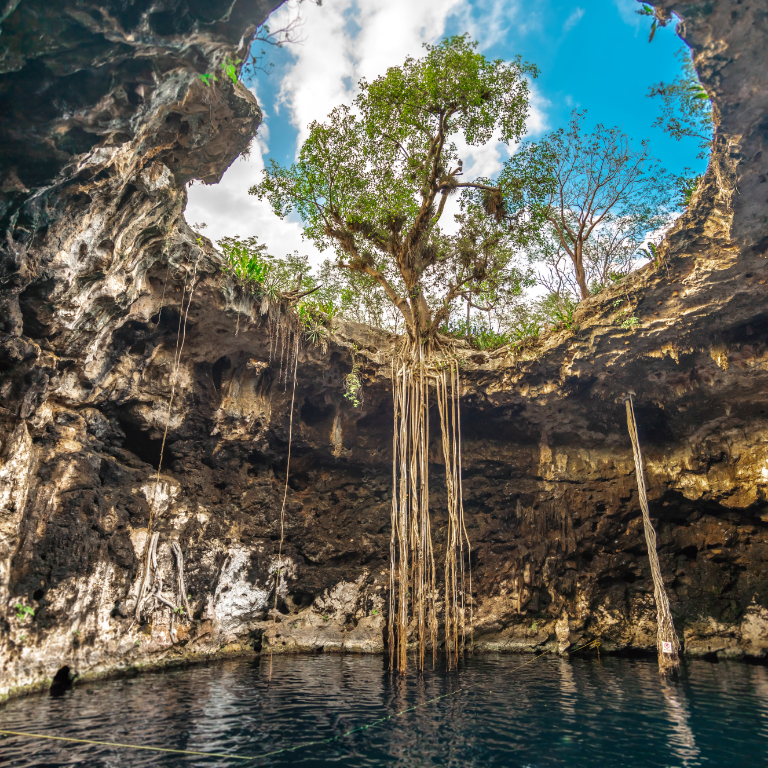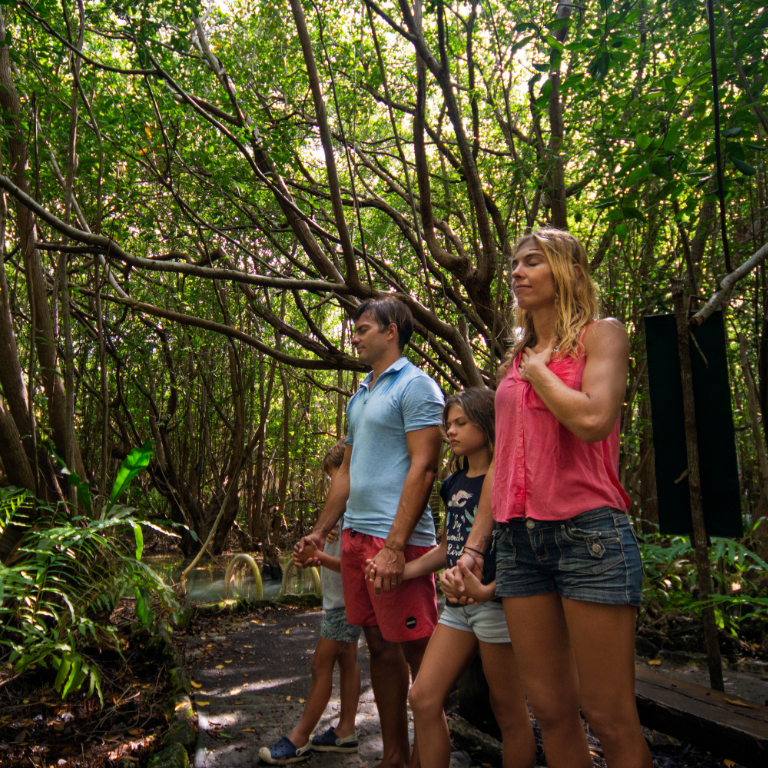The flora and fauna of a cenote are as unique as the cenotes themselves, as they contain unique plants and species. Surrounded by jungle and scorching heat, cenotes appear as an oasis for any living being. The cavern through which the underground river flows offers a safe habitat, and the freshwater is crystal-clear, ideal for life to thrive.
The most abundant fish are guppies and catfish, which are speculated to have arrived from the sea with the hurricanes. Endemic to the cenotes are the bottom-dwelling blind fish, the “Blind White Lady” and the “Yucatan Blind Eel,” both of which are endangered. Other inhabitants of cenotes include turtles, iguanas, frogs, bats, and butterflies. In addition, swallows and the beautiful Toh bird, popularly known as the “bird of the cenotes,” nest on the walls of the cenotes.
As for the flora, if you find yourself standing in front of a ceiba tree, you’re most likely standing over an underground stream or a cenote. So much so that the Mayans consider the ceiba tree the central axis of their cosmogony, connecting the underworld with the mortal world and the heavens. Chechén, which contains a toxic resin, also grows nearby, and there’s likely a chacá tree nearby, whose resin is the antidote.







